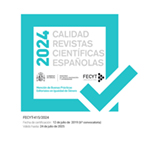Generative Contexts: Generating value between community and educational settings
Dan Lyles, Michaesl Lachney, Ellen Foster, Zoe Zats
Reviewer A:
Reviewer did not want review to be published.
Recommendation: Accept.
Reviewer B:
Reviewer did not want review to be published.
Recommendation: Accept.
Reviewer C:
Please, comment on the most relevant aspects (positive points and areas to improve) of the reviewed article.
(More on the attachment)
This article covers the application of what the authors call generative contexts to culturally responsive teaching (CRT) and does so by considering three technologically oriented educational case studies. The piece, which traverses the nexus between education, politics, and technology, is generally sound and provides strong and valid empirical and theoretical insights. The piece warrants publication after some revisions.
First: My expertise resides not in education studies but in digital media so I did have some trouble parsing the relationships and history between CRT and generative contexts/justice (gc/gj) frameworks. The writer/s must make this more clear for the general reader. What I got from the piece is this: CRT has existed in (American??) educational contexts for some time now but its basic history is a bit unclear: as a reader I was provided with no tangible sense as to whether this is still marginal or a growing trend in public schools, and so on. Some very basic history/context would help a lot.
Second, this ambiguity applies as much (or even more) to generative contexts/justice. Is it “a variant” of CRT as suggested or is it something slightly different? Is generative justice a critique of CRT or again a sub-genre? Was it borne from the CRT movement or independent of it and then brought over? Has it only been applied to a limited number of schools thanks to the NSF grant? Or is it a more general framework that is also being adopted more widely by those educators involved in the CRT movement? Were students and educators educated as to generative justice frameworks? It would help to make these relations/ships more clear in the body of the text as the broader significance and context is not clear to the non-specialist reader.
Finally, I have two comments about the writing/structure one of which will also allow me to entertain more substantive issues. First the piece is generally written well but it is *riddled* with typos and mistakes. I have pointed out a small fraction of them below (and took the opportunity to pose some questions I had as well).
Second, I find the current structure does not serve the piece well and the introduction is pretty flat which is a shame since the case study material is so interesting. I would encourage the writers to offer a story-fueled vignette drawn from one of the three educational contexts that can serve as a microcosm and tale of what is to come.
Would you suggest any changes or make any recommendations to improve the quality of the article?
More substantially, the article could be strengthened by changing the structure: after the introduction, I would move right into the three case studies, and then reserve a final section for the theoretical implication of gc/gj. As it stands, since the authors 'theorize' gc/gj independent of the case studies it tends to fall flat on its feet. It would be much more enlivening discussion to have the implications of gc/gj drawn out by referring back to the three case studies. So the authors should offer just enough background in the introduction so the reader can follow the empirical cases and then reserve the last section for a meatier discussion of gc/gj.
To end, I do have a final set of questions related to gc/gj that could help sharpen some of the theoretical issues concerning the topic.
First, one of the key take away points in the piece concerns an issue that is a bit under addressed (although certainly mentioned in passing): that STEM education when divorced from cultural and political contexts tends to benefit a rather narrow and already privileged population. A lot more should be made of this and this issue should be raised from the get-go. This to me is the central justice issue and could be stated as such. If education does not serve to education everyone it totally fails in its mission.
This then relates to a second question about the meaning of justice: the author's themselves posit that it is hard to define. Still, at times they connect justice to issues outside of education (such as food justice) but then in other contexts like the programming examples, gc/gj is meant to fulfill the goals of education. A bit more clarity as to the parameters of what is meant by justice would help.
Second, the author's on a few occasions present generative justice as a third way, distinct from capitalist markets and state: “What is clear at this point is that both capitalist accumulation and centralized state control will fail to bring about top-down forms of justice.”First these statements presented a few times seem tacked on and do not add anything to the article as presented (if anything they weakens it).
Either this statement has to be *substantiated* or just dropped with the focus being more narrowly on how to create educational contexts that fulfill the aim of education (with an argument as to why justice is important for education). The reason why I state this is I can imagine for instance a centralized state that limits the abuses of capitalism (that would indeed be helpful even if not complete for enacting justice) and would thus aid in creating justice. So the binary as presented is just not compelling or substantiated enough.
Recommendation: Revisions required.
The text included important modifications before publication












